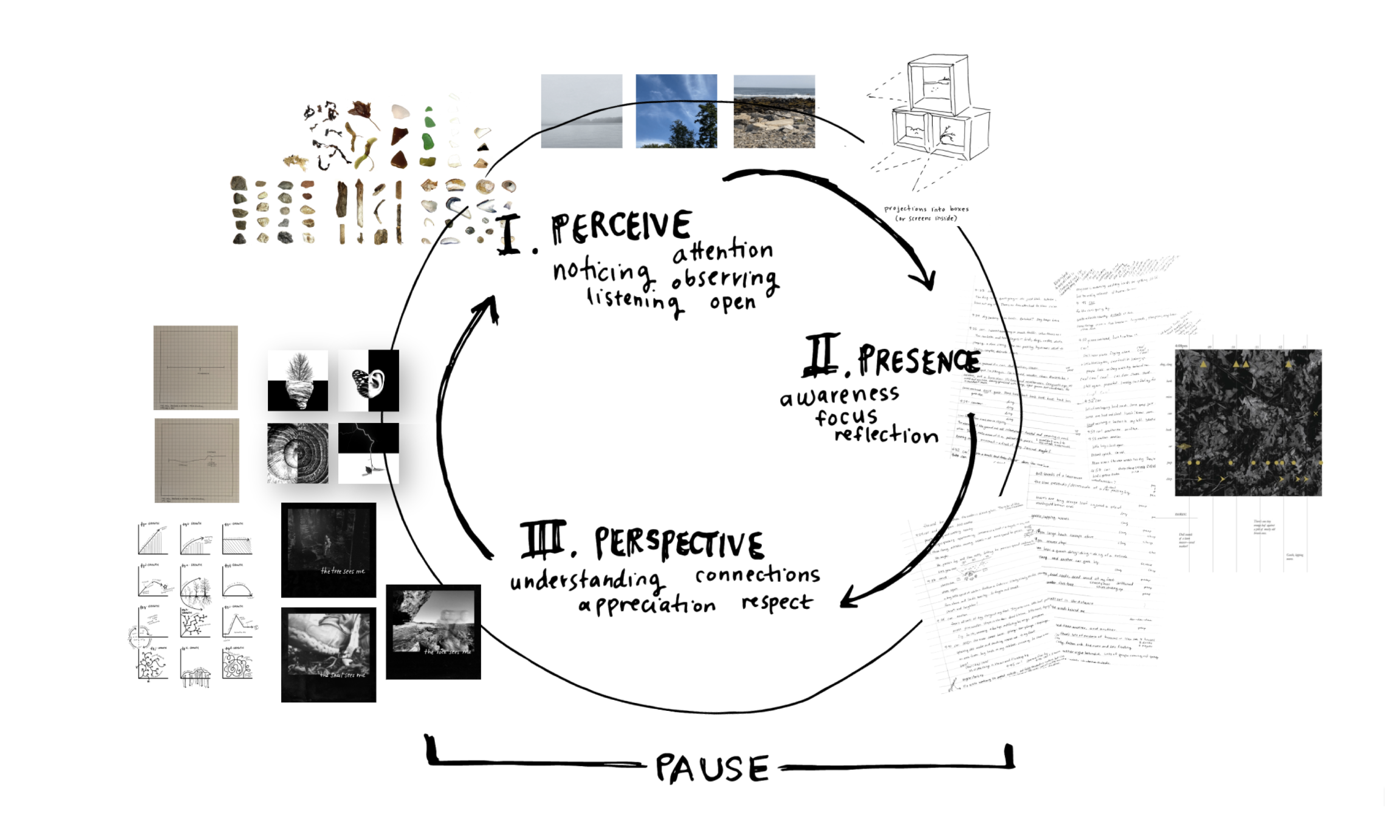Pause to Notice: A Call to In-Action
Lizzie Cox
There is nothing profound about going to nature for contemplation. Perhaps, however, there is something profound about using “nothing” to contemplate nature. Nothing, in this sense, refers to an absence of something: an interval, break, gap, space, or, specifically in the case of this thesis, a pause. By exploring the moments, spaces, and value in life’s fundamental need for pause, and the ability to reorient our attention towards noticing the mundanity of everyday nature, I am interested in understanding how design can interrogate and alter our framing of the human-nature relationship.
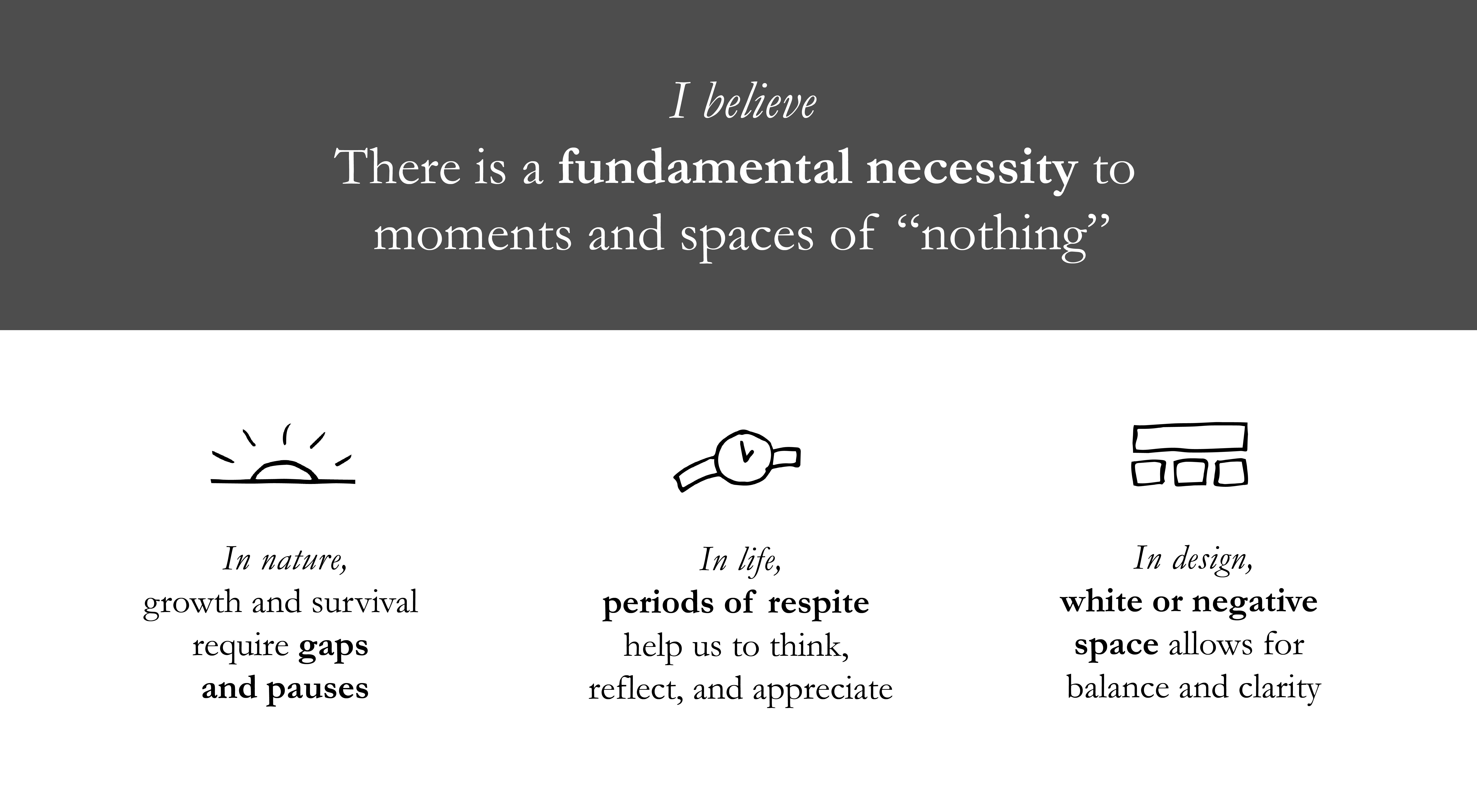
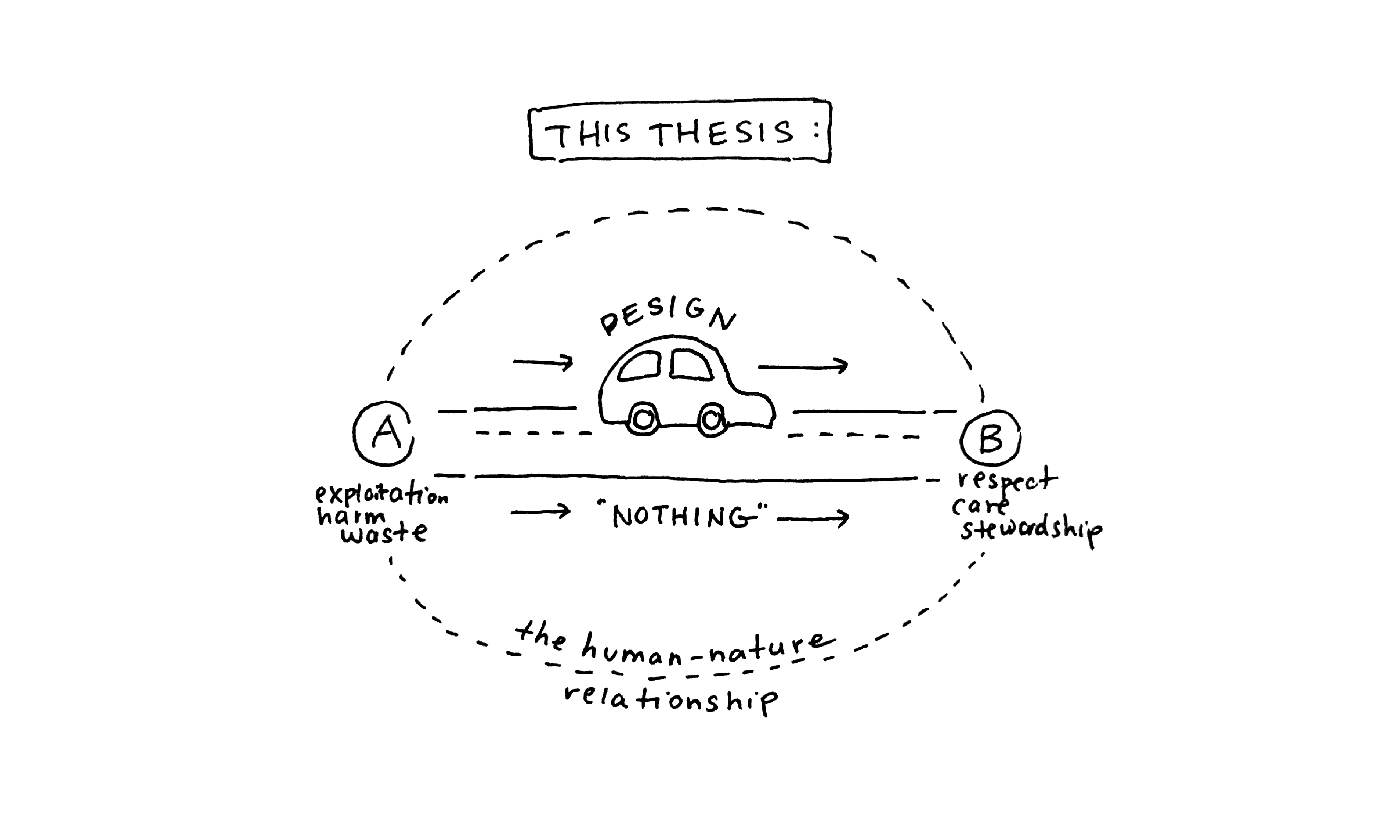
How could “nothing” be a tool for the human-nature relationship?

To Collect
To better understand my own relationship with nature, I spent time “doing nothing” in it. I catalogued items, recorded audio, captured video, scribbled notes—all during moments of pause—and let the experiences inform the resulting design, with no expectations of outcome.
Visual Philosophies
During these moments of nothing, I also used sketching and graphing to explore the human-nature relationship. Inspired by Agnes Denes’ “visual philosophies,” I charted a few of my own analytical thoughts into visual forms.
The Noticing Project
A self-designed exercise in which I immersed myself in nature for an hour, as still as I could, and simply noticed. I sat and watched and listened and made note of everything I could—no matter how mundane or minute—and then created a visual language to chart the sounds and observations I noted.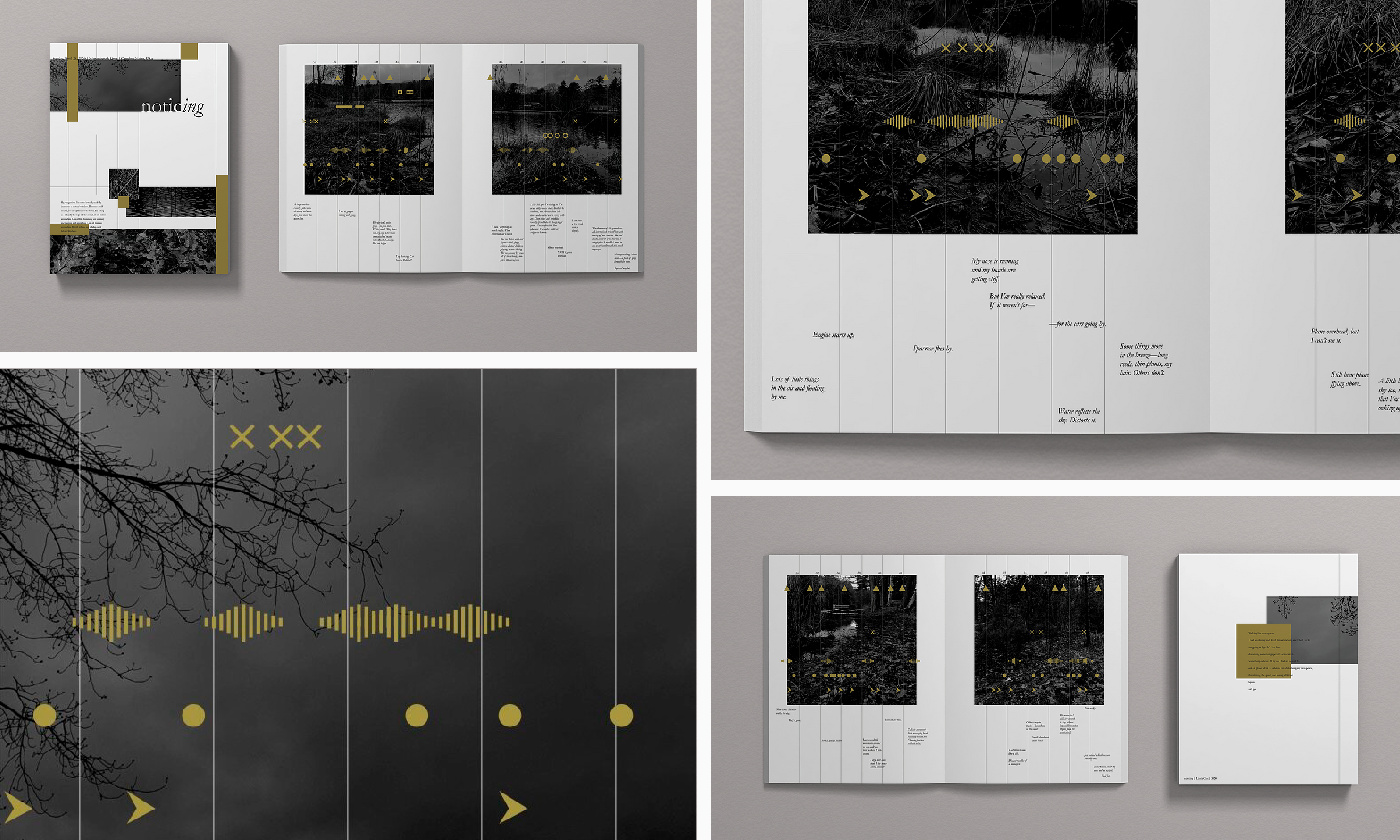
Noticing
I filled several pages with notes that included bird sounds, human activity, car noises, descriptions of my observations, and inner thoughts during the hour. For the final design, on top of photographs I captured during the exercise: each shape represents a different sound or activity, each line a minute passing. Then it was all put back together with my original notes into a book.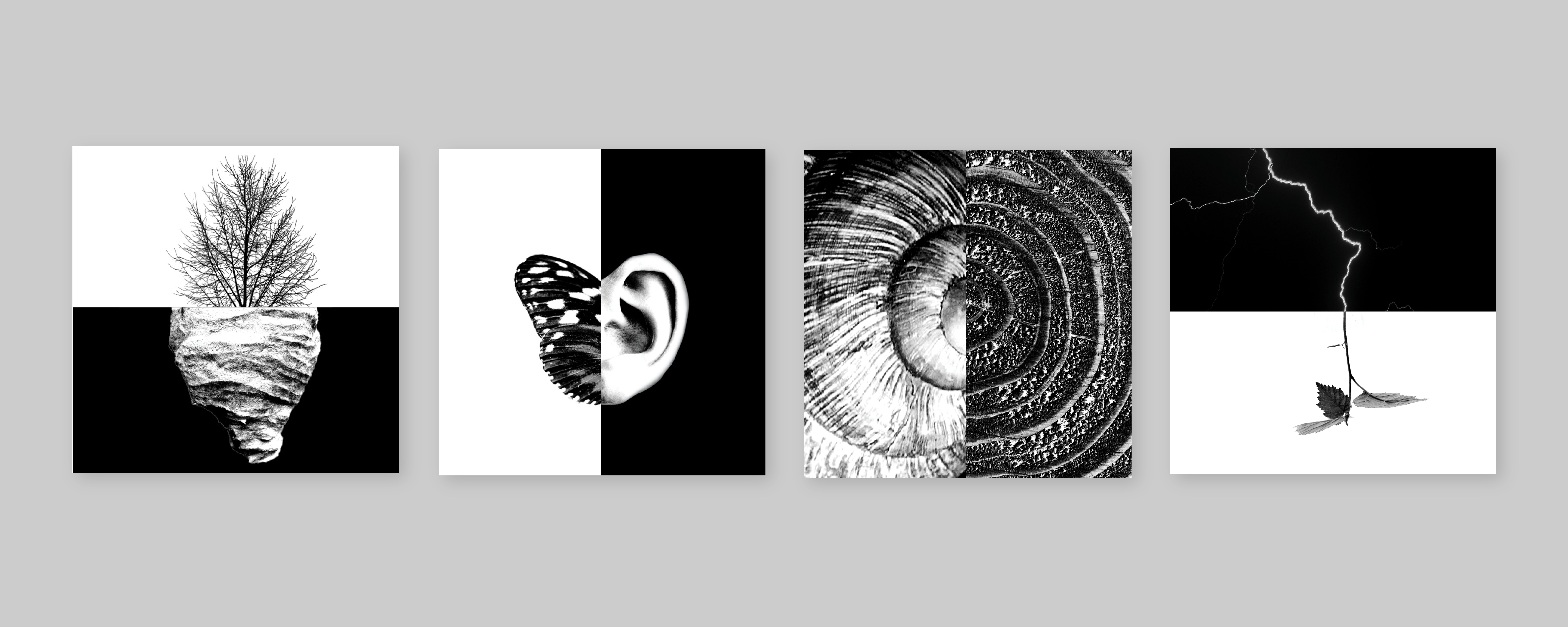
Dichotomies
In my research, which included a lot of sitting outside and thinking, I began to investigate what comes to mind when we think of "natural"—is it animals? Plants? Ourselves? I was also questioning the various extremes or differences—beautiful vs. ugly, animal vs. plant, wild vs. still—that all fall under the same umbrella of "nature." I experimented with bonding some of these dichotomies, as I saw them, together. Same nature, but different.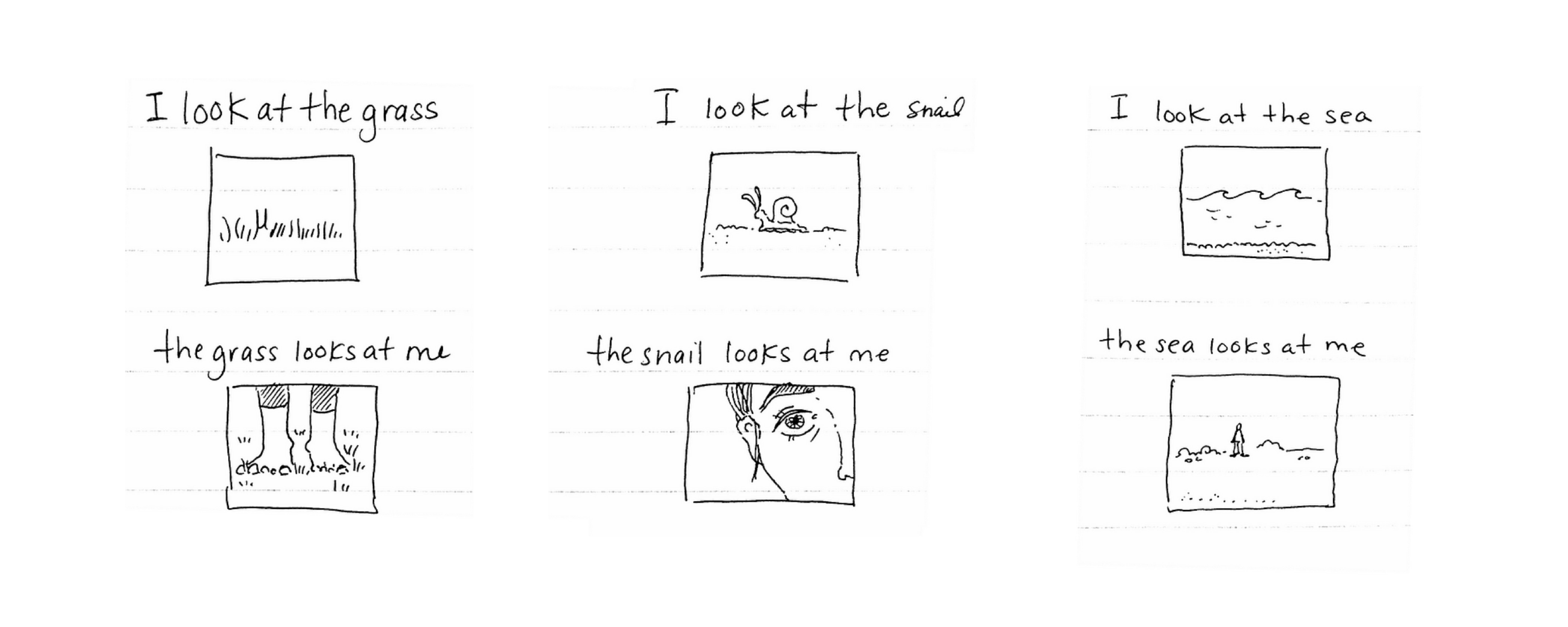
Perspectives: "How the _______ sees me"
This project represented the culmination of my research into pausing, "nothing", and the human-nature relationship: what can ultimately be gained from a well-placed pause?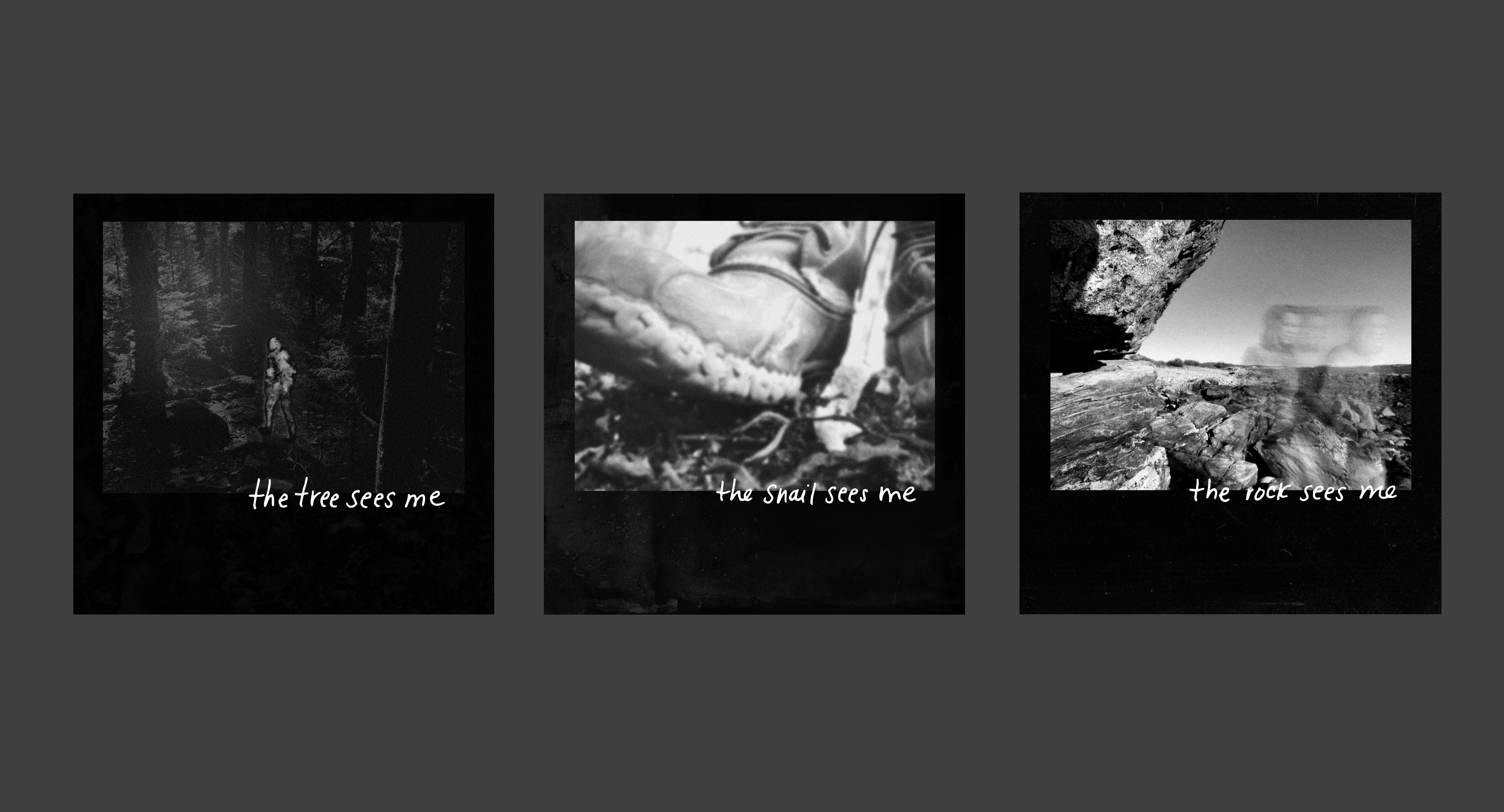
Perspectives: "How the _______ sees me"
The acknowledgement—and appreciation—of not only one's own presence in the natural world, but also the existence of narratives and perspectives outside of our own human-centric ones. "How the ____ sees me" is a speculative series of visuals considering how nature does, or does not, perceive me.